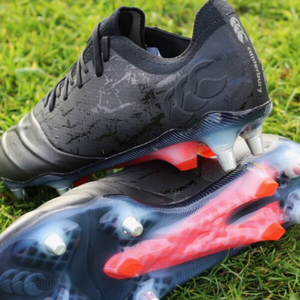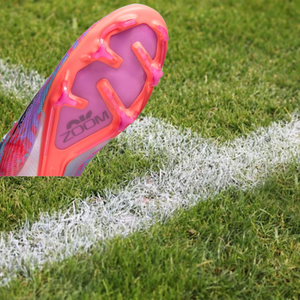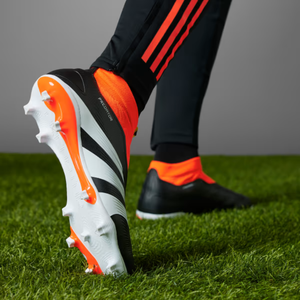All Types of Pitches
The Three Types of Rugby Shoes: SG, FG, AG
Rugby is a demanding sport which requires the right equipment to optimize performance and minimize the risk of injury. Among the essential equipment, footwear plays a key role crucial. They must not only offer good grip and optimum stability, but also be adaptable to different playing surfaces. The three main types of rugby boots are SG (Soft Ground), FG (Firm Ground) and AG (Artificial Ground). Each of these categories responds to specific needs according to field conditions. Let's take a closer look at these three shoe types.
SG (Soft Ground): For soft, muddy ground
SG shoes are specially designed for soft, wet and muddy terrain. These conditions are common durant autumn and winter, when rainfall makes rugby pitches particularly slippery and unpredictable.
Features:
- Removable studs: SG shoes are fitted with removable metal studs, often 6 to 8 per shoe. These studs are longer than those on autres boots, generally between 12 and 21 mm. This extra length allows them to penetrate deep into the soft sol, offering superior traction.
- Stud configuration: Crampon arrangement is designed to maximize stability and traction. Cleats are often strategically positioned to prevent slipping and improve thrust during scrimmages and sprints.
- Adaptability: Stud length can be adjusted to suit specific field conditions, offering additional flexibility for players.
Benefits:
- Superior grip: On muddy and wet ground, SG studs offer unrivalled grip, reducing the risk of slipping.
- Stability: They provide excellent stability, essential for scrimmages and phases of intense play.
FG (Firm Ground): For dry, firm ground
FG shoes are suitable for dry, hard or slightly damp ground. These conditions are typical of well-maintained grounds in summer or in regions where rainfall is scarce.
Features:
- Fixed studs: FG shoes feature studs molded directly into the sole. These studs are made of plastic or rubber and are generally shorter than those on SG shoes.
- Stud layout: The studs are numerous and evenly distributed to provide constant grip over the entire foot surface.
- Lightweight: FG shoes are often lighter, which improves players' mobility and speed.
Advantages:
- Versatility: They are ideal for a wide range of terrain conditions, with the exception of very soft or muddy ground.
- Comfort: Plastic or rubber studs are less aggressive to feet and ankles, reducing the risk of impact injuries.
- Performance: The lightness and flexibility of FG shoes enable fast, agile movements, crucial for players in the back position who need high speed.
AG (Artificial Ground): For synthetic pitches
Artificial or synthetic pitches are becoming increasingly common, especially in modern facilities and for training purposes. AG shoes are specially designed for these surfaces.
Features:
- Short, multiple studs: AG shoes have numerous short studs, often made of rubber or plastic. The short length of the studs prevents the shoes from sinking too deeply into the synthetic surface, which could cause injury.
- Stud layout: Cleats are arranged to provide uniform grip and reduce premature shoe wear caused by the abrasive surface of artificial terrain.
- Durability: The materials used for AG shoes are often more resistant to abrasion, prolonging the life of the shoe.
Advantages:
- Optimal grip: On synthetic surfaces, the multiple, short studs offer exceptional grip without the risk of excessive snagging, which can be dangerous for joints.
- Comfort and protection: AG shoes are designed for maximum comfort and reduced impact on joints, thanks to enhanced shock absorption.
- Longevity: Increased abrasion resistance ensures that AG shoes perform longer, even with frequent use on artificial pitches.
The choice of rugby boots is crucial to optimize performance and ensure player safety. SG, FG and AG shoes each meet specific needs according to field conditions. SGs are ideal for wet and muddy pitches, offering superior grip and stability. FGs are ideal for dry, firm terrain, providing excellent versatility and optimum comfort. AGs, on the other hand, are specially designed for artificial terrain, offering durability and adapted grip.
By understanding the specifics of each type of shoe, players can make an informed choice that enhances their game while reducing the risk of injury. Whether for winter matches, training on artificial turf or summer competitions on dry pitches, there's a rugby shoe to suit every situation.



